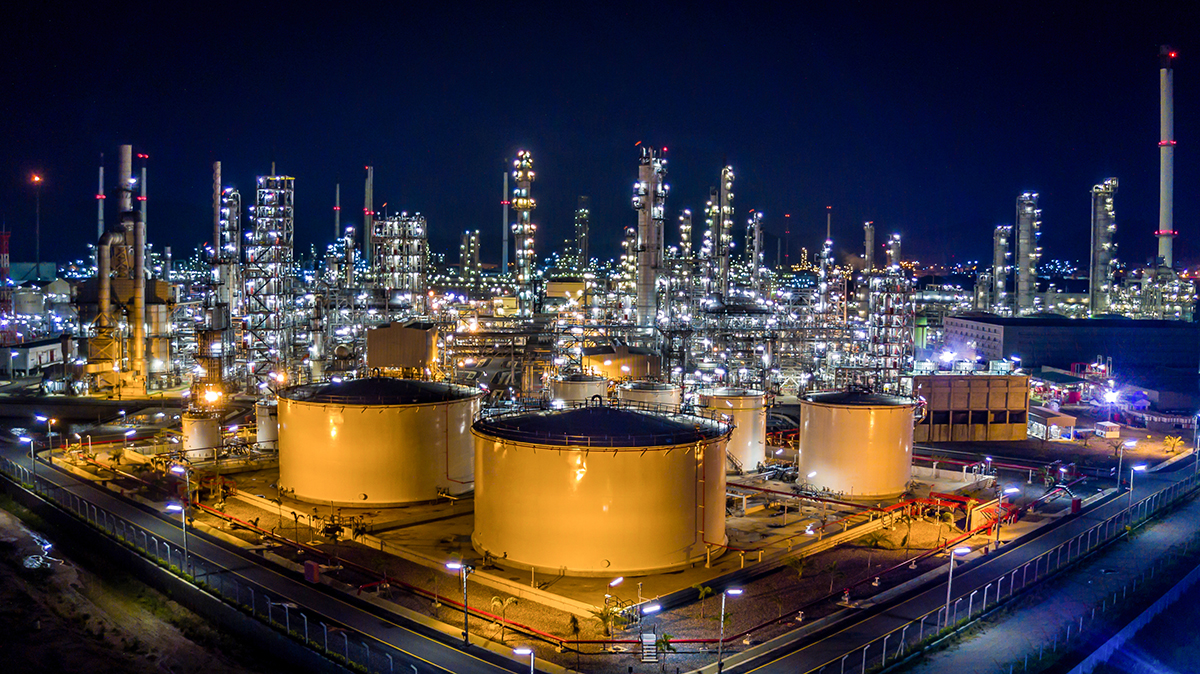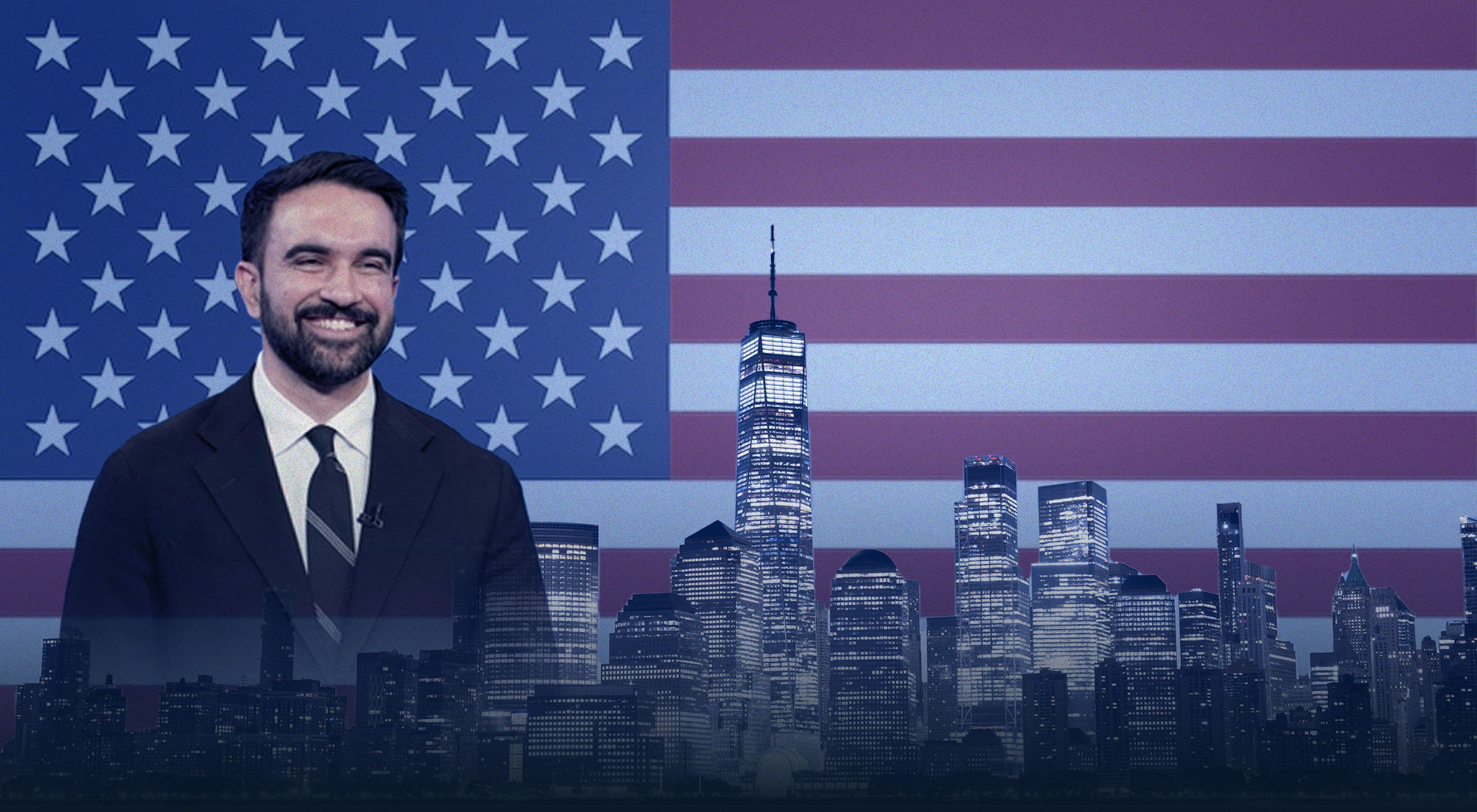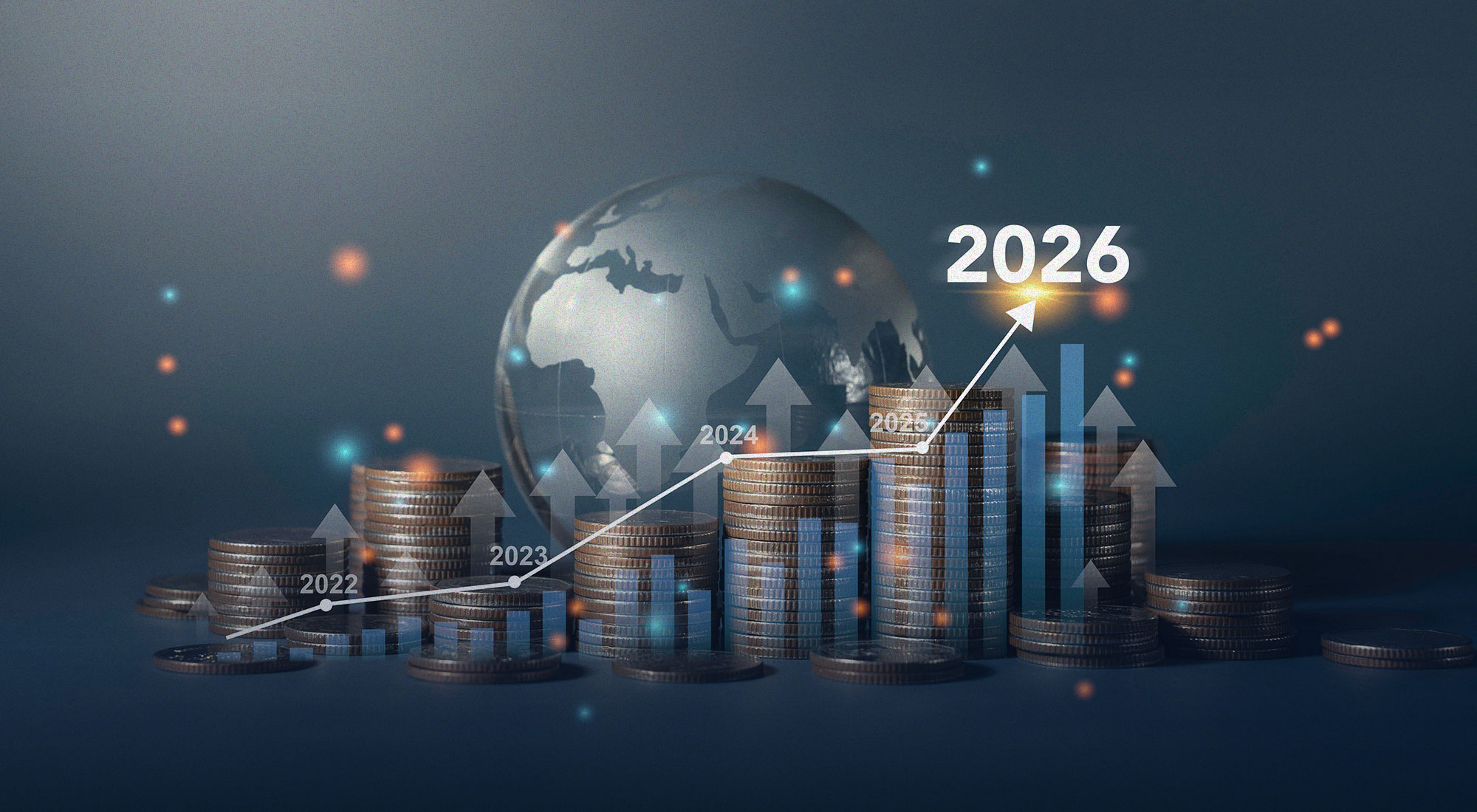The Gulf states have entered a period of unprecedented uncertainty when the three key pillars underpinning the region’s stability and development appear less dependable than in the past. To overcome these multiple challenges the GCC will need to re-examine the bases of its domestic, regional and global policies.
Since the creation of the GCC in May 1981 the member states, including the smaller oil producers like Bahrain and Oman, have looked confidently to a future where economic wellbeing is assured and growth is likely because of continued rising demand for Middle East energy. This first pillar of stability, in turn, created and cemented the traditional harmonious relationship between government and society: while the former keep an open door to hear the concerns of the latter, the primary role of government is to conduct the affairs of state while providing for the basics needs of their citizens at minimal cost. Thirdly, the GCC as a whole felt confident in receiving open-ended support from the United States and the West both for its domestic policies and its regional strategy which, in its latest form, seeks primarily to counter Iranian regional expansionism and combat terrorism.
In the opening of 2016 it has become clear that these three fundamental assumptions can no longer be relied on. There is a realisation, too, that the failure of the GCC to achieve the level of economic and military coordination that was envisaged at its creation has left the Arab Gulf without a unified strategy to face these new difficulties.
The collapse of global oil prices through 2014 and 2015 and into the opening weeks of this year has complicated the Gulf States’ efforts to confront the issues they face. The decision of OPEC states (and crucially Saudi Arabia, by far the dominant producer in the group) in December 2014 not to cut production contributed to a further price slump.
In the past it might have been expected that Saudi Arabia, traditionally OPEC’s ‘swing’ producer, would have led a move to trim output in order to halt the slide in oil prices. But from December 2014 onwards Saudi Arabia has refused to order a unilateral cut, insisting that it would make a move only if all other major producers, non-OPEC as well as OPEC, followed suit. The OPEC decision to maintain production levels was based, in large part, on the awareness that shale oil production in North America was developing fast and could eventually compete for OPEC’s markets around the world. So keeping market share, and therefore maintaining output, seemed the best course.
But OPEC’s decision led to a collision of interests. Data from the years leading up to 2016 clearly illustrate this:
Table 1
OPEC and US Annual Crude Oil Production 2012-15 (Million b/d)
| Year | OPEC | US |
| 2012 | 31.25 | 6.48 |
| 2013 | 30.48 | 7.45 |
| 2014 | 30.27 | 8.71 |
| 2015 | 31.40 | 9.43 |
Source: OPEC and EIA data
Table 2
Brent Crude Price 2012-2016 ($/barrel)
| Date | |
| 1 Jan 2012 | 110.98 |
| 1 Jan 2013 | 110.63 |
| 1 Jan 2014 | 106.40 |
| 1 Jan 2015 | 52.99 |
| 1 Jan 2016 | 30.60 |
| 20 Jan 2016 | 27.88 |
Source: Investing.Com (http://uk.investing.com/commodities/brent-oil-historical-data)
Table 1 shows how, from 2012 through to the present, OPEC production has changed little, remaining in the 30-31 million barrels a day (b/d) range. Over the same period, United States shale production rose from 6.48 million b/d in 2012 to 9.43 million b/d in 2015. Against this background of over-supply (compounded recently by negative economic figures from China) markets have recorded a dramatic dip in oil prices from more than $110/barrel in 2012 to less than $30/barrel in January 2016.
Gulf States face not only the short-term prospect of a hugely oversupplied global market but also the likelihood of other regional producers waiting to ramp up output. With the lifting of sanctions on Iran in January, even more oil will be on sale. Iranian Deputy Oil Minister Rokneddin Javadi said on 18 January that his country was “able to increase oil production by 500,000 b/d after the lifting of sanctions, and the order to increase production was given today.” While it might take several months for the extra 0.5 million b/d to reach customers, Iran can immediately start selling large volumes of oil that it has kept in store, in onshore tanks and in floating storage tankers. It is estimated that up to 75 million barrels of stocks are awaiting buyers.
Iran’s western neighbour, Iraq, also represents a strong challenger to global oil suppliers. While the Islamic State insurgency has cut most of the federal government’s northern production, exports from southern fields have risen from about 2 million b/d in early 2014 to a capacity of 3.4-3.6 million b/d today. It is tempting to suggest that Iraq might be on course to meet its target of reaching southern export capacity of 6-7 million b/d by 2020. But this is where the new oil price reality kicks in. International oil companies in southern Iraq have been ordered to put oil field expansion plans on hold, leaving future output capacity goals in doubt.
Also on hold for now because of financial constraints are plans by the Kurdish Regional Government (KRG) in northern Iraq to raise its production capacity from the current 550,000-600,000 b/d to 1 million b/d. But when global oil prices rebound significantly, both the Iraqi federal government and the KRG will be pumping hundreds of thousands of extra barrels into the global market.
Cutting subsidies
Faced with all these potential extra sources of oil-supply, and the possibility of future cyclical sharp increases and dips in global oil prices, the Gulf states need to create flexibility in their economies which can enable them to withstand price shocks. Given that state revenue is overwhelmingly (around 90 per cent) dependent on energy exports, there is little choice but to cut public spending. One huge drain on the public purse is the payment of subsidies on fuel and basic services. According to the IMF, spending in Gulf States – mostly on salaries and subsidies – doubled to $550 billion from 2008 to 2013. According to Saudi private investment bank, Jadwa Investment, “energy subsidies cost the Saudi government around $61 billion in 2015 (9.3% of GDP)”, with diesel costing $23 billion and gasoline $9.5 billion.
The UAE was the first Gulf state to see writing on the wall. It led the way in the summer of 2015 in cutting subsidies on gasoline and allowing the price to rise by 24 per cent. There were suggestions at the time that the Saudis might follow suit, but most observers were not convinced. Then, in the dying days of that year, the Saudi budget was made public. It included the surprise announcement that measures were in place to introduce a gradual lifting of subsidies on energy sources and basic commodities like water and electricity over the coming five years. Higher-grade gasoline in the kingdom has risen from 16 US cents/litre to 24 cents, lower grade from 12 to 20 cents. Diesel for transport is now 12 cents/litre, up from 0.07 cents.
On a daily basis the most noticeable affect of the lives of Gulf citizens will be a rise in transport costs. But in time the lifting of subsidies on sources of energy will feed into other sectors, such as electricity generation, which relies primarily on liquid fuels and natural gas. The Saudi industrial sector will also feel the effects of all these changes, not merely in terms of the rising costs mentioned above, but also – in the case of the thriving petrochemical sector – because the natural gas needed to produce petchems (the ‘feedstock’) will cost more. Up to now Saudi Arabia has enjoyed an edge over its international rivals because of exceptionally low gas prices.
For the petchems sector, the 133 per cent hike in feedstock bills contained in the current economic reforms presents a big challenge. With product prices already linked to declining global crude oil prices, thus already putting Saudi products under pressure, the feedstock rise will force the sector to look for ways of cutting costs. For example, Saudi Arabia’s National Industrialisation Company (Tasnee) predicts that the budget changes will dent its 2016 results by around $50.7 million – a drop of around 17 per cent. “This is quite a significant hit,” Tasnee CEO Mutlaq al-Morished told reporters in mid-January. “We are getting the management together and we are putting plans on how to find the ways and means to absorb this cost and try to save as much as we can.”
The gradual lifting of energy subsidies is part of the wholesale reform of government structure in Saudi Arabia and its executive process that has been under way since King Salman’s accession in January 2015. Deputy Crown Prince Mohammed bin Salman, who controls economic and energy strategy, has made it clear that he wants the kingdom’s economy to be more transparent and flexible to respond to changing global conditions. The announced plan for a limited sale of shares in Saudi Aramco should be seen in this context of opening up the economy.
Thus far the changes that Prince Mohammed has brought in – cutting excessive state spending, slimming bureaucracy, and consolidating decision-making – have won broad public approval. There is widespread public recognition, too, of the need for the kind of economic reform now being implemented, which includes a curb on state expenditure, for the benefit of the GCC countries as a whole. In the coming months GCC citizens will have to assess how the reforms impact directly on their own lifestyle and spending power. As long as the populations of the Gulf are convinced that the changes are both unavoidable and do not amount to sudden and arbitrary taxation, then there is every chance that popular support for the governments will be unaffected.
Reassessing geopolitical ties
As well as responding to the collapse of global oil prices and the need to cut subsidies, the Gulf States also have to decide how to react to challenges to their third pillar of stability: their regional and global strategic relationships. From the GCC’s perspective, two major changes have occurred, neither of which is in their interests. Firstly, the United States, the Gulf’s major international ally and protector, has indicated an unwillingness to engage in Middle East as directly as it did in the past. At the same time, the US has led efforts by the international community to develop relations once more with Iran and agree to lift international sanctions on it.
This latter development, in the perception of Gulf States, amounts to rewarding Iran for its policy of stoking regional insecurity, providing support for Shia communities in Bahrain, Iraq, Lebanon and Yemen, and buttressing the rule of President Bashar al-Assad in Syria. Out of a sense of frustration, Saudi Arabia, backed by other GCC states in March 2015 opened a new chapter in Gulf regional strategy by launching a direct military campaign in Yemen as the Shia Houthis, backed by elements of the Yemeni army, advanced on the main southern city of Aden. The GCC states’ success thus far in taking on a new role as a regional military power has been mixed. One month after the launch of ‘Operation Decisive Storm’, a second phase of the campaign was announced: ‘Operation Restoring Hope’. This suggested that victory and the rebuilding of Yemen were imminent. But the war has been stuck ever since at this inconclusive stage.
Even if a way is found of ending the conflict, the Gulf States will face two further challenges. The first will be (in cooperation with the Yemeni government and its Western allies) to contain and defeat al-Qaeda and Daesh/Islamic State, both enemies of GCC governments, which have thrived during the war, particularly in southern and eastern Yemen. Secondly, the rebuilding of Yemen’s infrastructure and broader economy will be impossible without huge long-term GCC fiscal and energy support, a tall order while oil prices remain depressed.
Even as the Gulf States contemplate the potential dangers they face from within the region – not least Islamic jihadist blowback from Iraq, Syria and Yemen – they have to contemplate how their global alliances have been affected by the crises of recent years. Relations with Washington may have cooled, but the GCC states have few other options. Despite a flurry of meetings between Gulf heads of state and President Vladimir Putin, Russia’s policies and military intervention in Syria cut across GCC interests there. Moscow, for now, is not a potential global ally.
China, on the other hand seems to offer a better hope. The visit of President Xi Jinping to Saudi Arabia in January 2016 witnessed the two sides upgrading their relationship to the level of “comprehensive strategic partnership”. Nevertheless, the Chinese delegation appeared to show more enthusiasm for the signing of 14 bilateral accords covering economics, energy and other issues than for the prospect of becoming involved in the turbulent politics of the Middle East – the way that the US has been for years and Russia is starting to do once more.
The current turmoil in the Middle East, which is seeing the intervention of global powers, and the attendant unprecedented levels of economic and geopolitical uncertainty, present GCC leaders with huge challenges. Far from shying away from these they have adjusted their domestic and regional strategies accordingly – with the aim of breaking new ground while keeping the traditional fabric of society intact.








